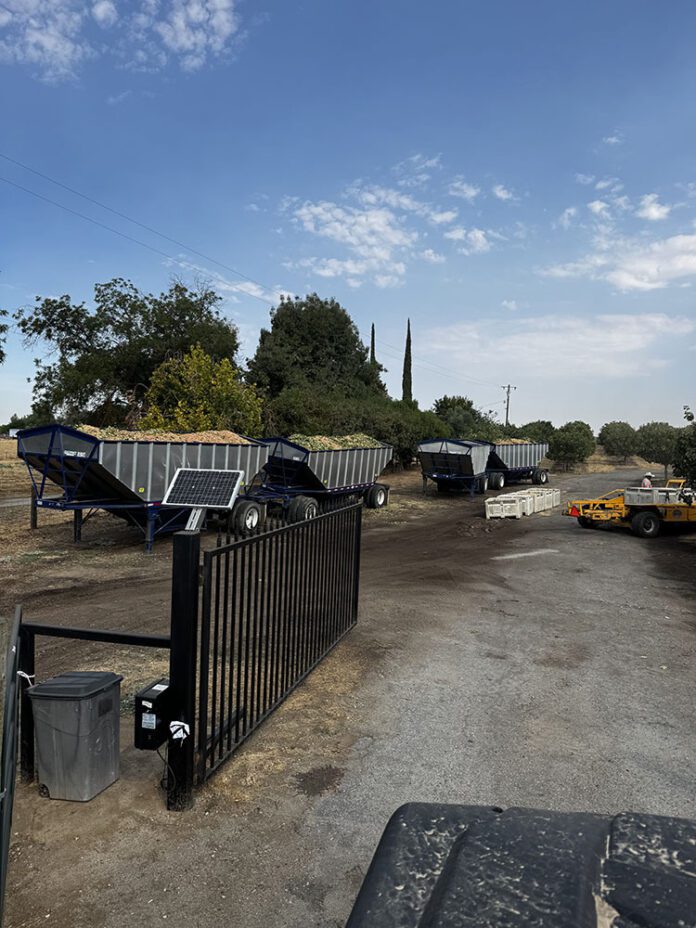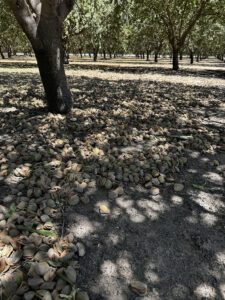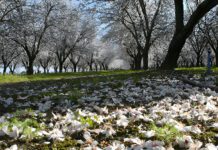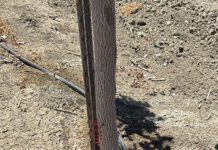
Listen to the audio version of this article. (Generated by A.I.)
In agriculture, some things get lost in semantics.
We are always betting on getting better returns, but we don’t always speak in the same terms. Often, we refer to sodium issues as just “salt.” Almost every fertilizer is a salt. Gypsum, Epsom salt, potassium sulfate (SOP), ammonium nitrate and potassium chloride, for example, are all salts.
Some nutrient combinations have higher percentages of specific elements but aren’t soluble enough for that to matter much as fertility, yet we count it as adequate for the crop’s needs. A 50% potassium source doesn’t yield 50 pounds per 100 applied if it’s not solubilized. Many growers will run sets as long as their neighbors because it’s convenient, and “what we do.” Their differing output of water, from their well with a different horsepower, can have a much more dramatic effect on their soil type.
Often in foliar applications we apply a specific amount of a nutrient blend no matter what crop we are protecting and feeding. A fungicide ride or pesticide application may differ from 10 to 100 gallons of water, thus changing the dilution of the nutrition. It may be less effective at that dilution. Proper farming has become so technical that we must be increasingly on our game to make it make sense and get a premium return on our efforts.

Postharvest Nutrition
One of the issues with improper use of a farming term that I always have discussions with my growers over is postharvest nutrition. In almonds, harvest often begins in early August. We then progress from our Nonpareils to our pollinators, and depending on the crop’s development and the acreage we have to get around, it may be late September before we finish. By that time, the trees shaken first have only seen water for a month after finishing that seasonal marathon. Why wouldn’t we put nutrition in the water applied mid-harvest? Your trees could use it. Next year’s buds are betting on it.
The same thing applies to pistachios. We often have two weeks or more between shakes of our trees. Why wouldn’t we feed them? This isn’t soil amending. Applying gypsum, SOP, sulfur, cover crops and compost is soil amending and can be done later before the winter rains. Our trees need food now. And they drink that. Put it in the irrigation system, through the drip or sprinklers, in the wetting pattern, where all the roots are concentrated, in a form they can drink, now. Solubility and absorbable derivatives of the specific nutrients you are targeting are key here.
I am a firm believer in applying an orthophosphate form of phosphorus with a soluble K source in the middle of my harvests. The trees need P to create adenosine triphosphate, or ATP, which the plants use for energy. K is great at translocating sugars and nutrients while helping regulate stomatal opening and closing. Those two elements are key to proper nutrition. If you ended up a bit short of nitrogen in your July tissues, add a shot of that. This is also a great time to add any micronutrients you were short of. I even hedge my bet with extra zinc and boron for my pistachios because they are critical in the spring for bloom. It’s tough to get many nutrients in the trees early in the season before the bloom chaos.
‘Why wouldn’t we put nutrition in the water applied mid-harvest? Your trees could use it. Next year’s buds are betting on it.’
Nutrient Synergies and Soil Health
Applying nutrition is often relatable to the old saying, “The whole is greater than the sum of the parts.” Together, many nutrients are much more efficient than by themselves. K takes other nutrients with it. P is used with a lot of carbon in the Krebs cycle. N is a dependent element used in the Krebs cycle as well. Oxygen plays a major role. Does all this start painting a picture? Water, P, N and CO2 are the main components of the ATP circuit. We can even help this along by adding C in the form of organic (C-based) acids. Humics and fulvics are great at this time. Yeast-fermented derivatives, such as citric, malic, gluconic and lactobionic acids, can all be added to make things much more efficient in our soils.
As those roots flush and cells are dividing rapidly, calcium is needed in large supply. That only happens if it’s soluble. Calcium nitrate, calcium thiosulfate and calcium ammonium nitrate, for example, can aid in supplying that element at a critical time. This is often too late when we are in soil-amending mode in late October and November. Those very insoluble salts take too long to become available. As many of the nutrients you applied all year do become more available through biological digestion, adding humic and fulvic will help keep it in the root zone, adsorbed, chelated or complexed to the C atoms. Negative charges, four of them on each C atom, can hold four K atoms or two Ca atoms. This can keep them from re-bonding with P or sulfate and becoming once again insoluble. C can also help feed that biology. On that note, why not add some active, beneficial soil biology as well? Hedge your bets.
Farming is legalized gambling. We have one shot at a good crop every year barring a major Mother Nature curveball. At each physiological stage, if we are short in a specific aspect of nutrition, we lose yield. Period. It’s better to be the house than the guy sitting at the table. You can provide the chips. Give the trees the credit they need to keep playing, and my bet is they’ll pay you back.















